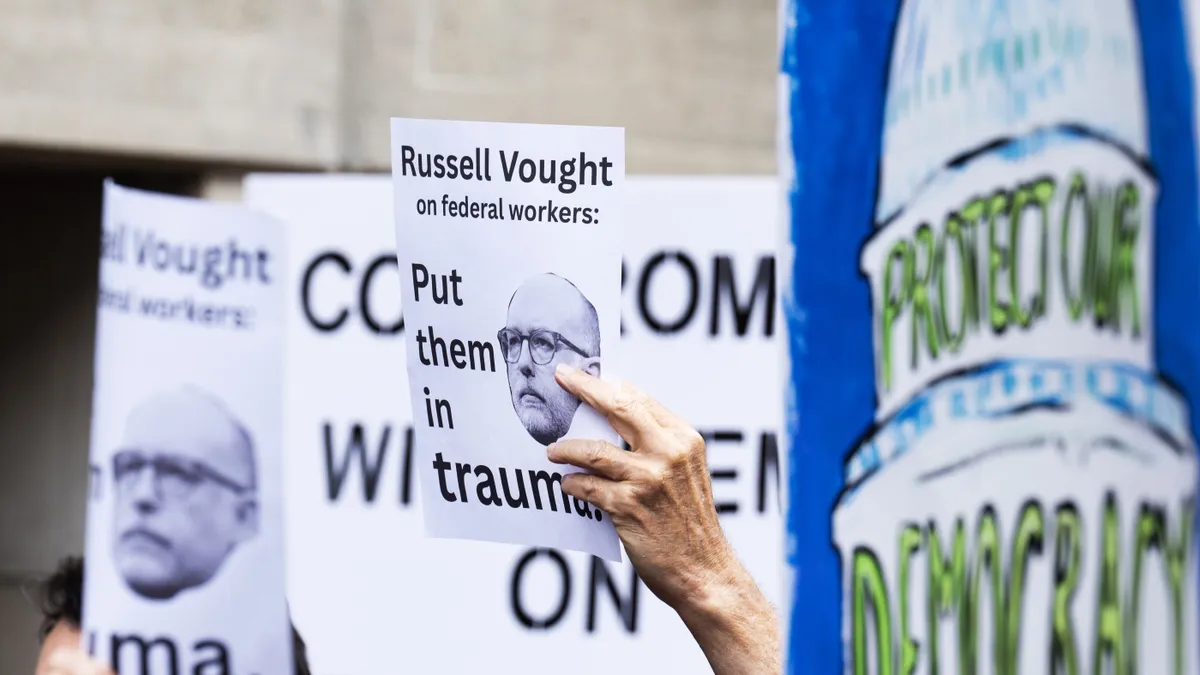
A federal judge in San Francisco has indefinitely halted the Trump administration's mass layoffs of federal employees that are directly tied to the ongoing government shutdown. This significant ruling came nearly two weeks after U.S. District Judge Susan Illston issued a temporary pause on thousands of layoffs, commonly referred to as reductions-in-force (RIFs), affecting various federal agencies where federal employee unions, including the American Federation of Government Employees, have members or bargaining units involved in the lawsuit.
In a recent court session, an attorney representing the Trump administration argued that the executive branch retains the authority to conduct RIFs during periods of Congressional appropriations lapses in order to fulfill the president's policy objectives. Michael Velchik, an attorney with the Justice Department, contended that in the absence of incoming funds, it is prudent for the government to seek cost-cutting measures.
On the other hand, the plaintiffs' attorney, Danielle Leonard, firmly disagreed, asserting that a lapse in appropriations does not equate to an elimination of statutory authority. She emphasized that the government cannot instruct agencies to disregard Congressional mandates. Moreover, Leonard argued that the administration had violated federal law by mandating employees to continue working on RIFs during the shutdown period.
Since Judge Illston's initial temporary restraining order, both parties have engaged in discussions regarding its scope. The Trump administration initially claimed that the order did not apply to a majority of the approximately 4,000 federal employees who had already received layoff notices since the shutdown commenced on October 1. This included employees from the Treasury Department and the Centers for Disease Control and Prevention. However, Judge Illston later broadened the order to encompass six additional unions.
During the court hearing, Judge Illston expressed her belief that the unions were likely to demonstrate that the Trump administration's actions were unlawful. However, she signaled a slight retreat regarding the breadth of her order, indicating that another hearing would be scheduled to ascertain whether some of the RIFs announced since the shutdown, particularly those at the Interior Department and the Education Department, were indeed connected to the appropriations lapse.
The repercussions of President Trump’s attempts to reduce the federal workforce are evident, with Judge Illston highlighting the emotional and psychological toll on affected workers during her opening remarks. She recounted testimonies from employees who have received layoff notices since October 1, including a veteran of the Air Force who described the current situation as the most traumatic experience of her life, surpassing even her combat deployment.
Many federal employees are experiencing recurring threats of termination due to RIF notices. One poignant testimony came from Mayra Medrano, a program analyst at the Commerce Department's Minority Business Development Agency, who reported receiving a RIF notice earlier in the year, only to be reinstated by court order later. Medrano described the ongoing anxiety and stress caused by the looming layoffs, stating, “Receiving a RIF notice during the government shutdown, on top of the previous RIF, has been traumatic and it will have a lasting impact on my health.”
In the initial hearing two weeks ago, Leonard brought attention to comments made by White House Office of Management and Budget Director Russell Vought, who had previously expressed a desire to instill fear among government bureaucrats. Vought's remarks suggested that he wanted federal employees to feel so traumatized that they would be discouraged from attending work. This intention aligns with the ongoing layoffs, as Leonard pointed out in court.
Prior to Judge Illston's intervention, Vought had indicated that over 10,000 federal employees could be issued RIF notices during the shutdown. Despite this, it represents just a small fraction of the federal workforce reductions that have occurred since Trump took office in January. In August, Office of Personnel Management Director Scott Kupor projected that approximately 300,000 federal workers would exit the government by the year's end, with 80% of those departures being voluntary. This suggests that even before the shutdown, around 60,000 federal employees were at risk of involuntary separation.
The situation surrounding the federal layoffs highlights the significant legal and emotional challenges faced by federal employees under the current administration. As the case progresses, the implications for both the federal workforce and government policy remain uncertain.